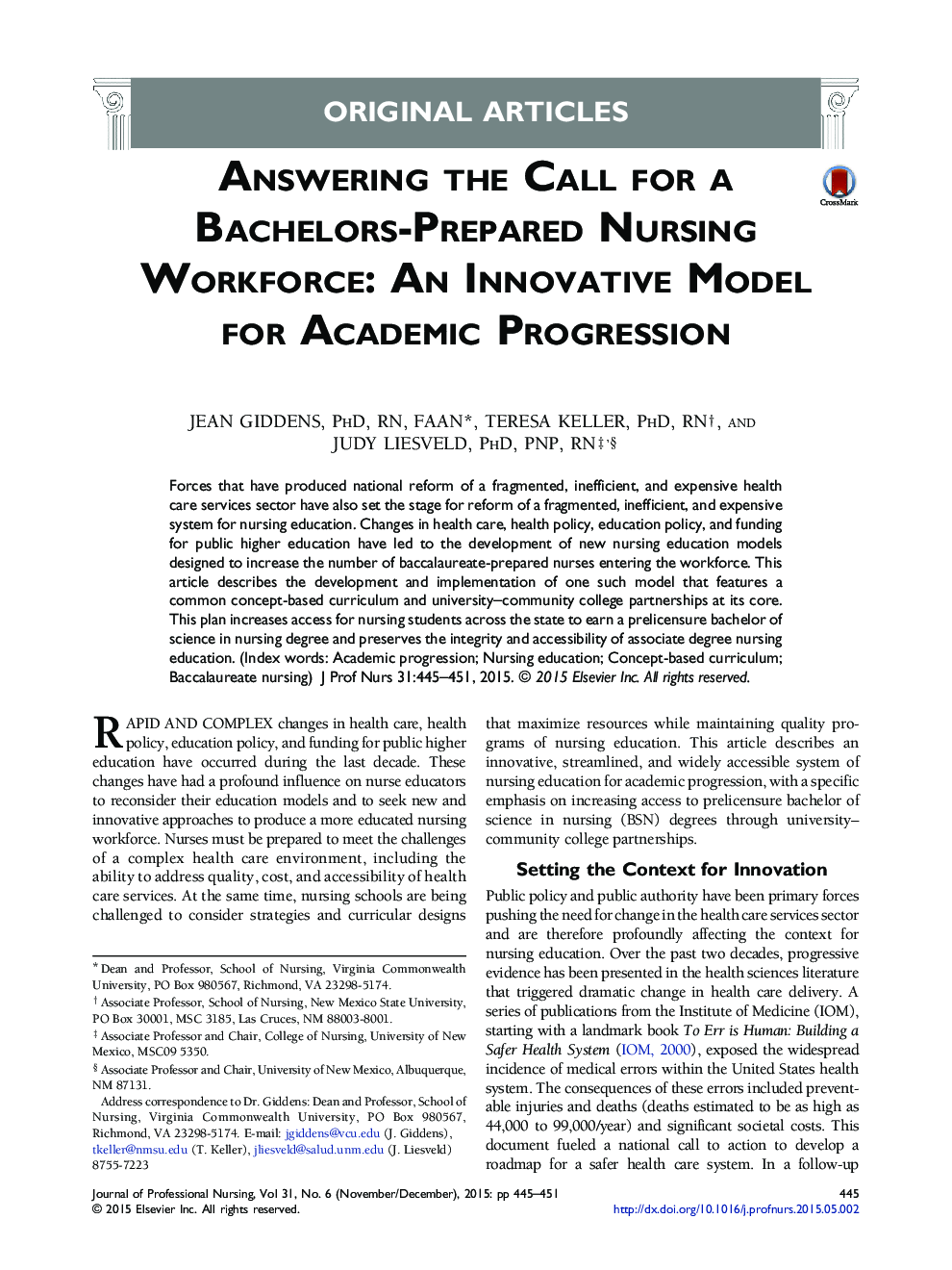| Article ID | Journal | Published Year | Pages | File Type |
|---|---|---|---|---|
| 2668186 | Journal of Professional Nursing | 2015 | 7 Pages |
•We developed a statewide, concept-based curriculum to increase BSN graduates in response to the state and national need for a more educated nursing workforce.•The innovative curriculum model features prelicensure BSN degree through university–community college partnership and achieves a consistent and resource-efficient approach to quality nursing education.•Gaining support from a wide and diverse group of stakeholders was central to the success of the innovative model.
Forces that have produced national reform of a fragmented, inefficient, and expensive health care services sector have also set the stage for reform of a fragmented, inefficient, and expensive system for nursing education. Changes in health care, health policy, education policy, and funding for public higher education have led to the development of new nursing education models designed to increase the number of baccalaureate-prepared nurses entering the workforce. This article describes the development and implementation of one such model that features a common concept-based curriculum and university–community college partnerships at its core. This plan increases access for nursing students across the state to earn a prelicensure bachelor of science in nursing degree and preserves the integrity and accessibility of associate degree nursing education.
